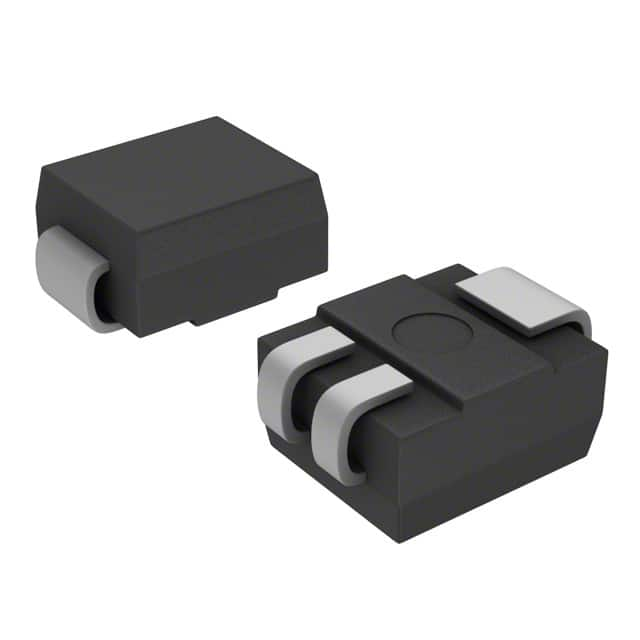Szczegóły produktu można znaleźć w specyfikacjach.

S4S1RP Product Overview
Introduction
The S4S1RP is a versatile electronic component that belongs to the category of integrated circuits. This entry provides an in-depth overview of the product, including its basic information, specifications, detailed pin configuration, functional features, advantages and disadvantages, working principles, detailed application field plans, and alternative models.
Basic Information Overview
- Category: Integrated Circuit
- Use: Signal Processing and Control
- Characteristics: High precision, Low power consumption, Compact design
- Package: Small outline package (SOP)
- Essence: Signal processing and control
- Packaging/Quantity: Typically packaged in reels of 1000 units
Specifications
The S4S1RP is designed with the following specifications: - Input Voltage Range: 3V to 5V - Operating Temperature: -40°C to 85°C - Output Frequency Range: 1Hz to 1MHz - Power Consumption: 10mW max
Detailed Pin Configuration
The S4S1RP features a standard pin configuration with the following key pins: 1. VCC: Power supply input 2. GND: Ground connection 3. IN: Input signal 4. OUT: Output signal 5. EN: Enable pin for control
Functional Features
- Signal Amplification: The S4S1RP provides high-quality signal amplification for various applications.
- Low Power Consumption: It is designed to operate efficiently with minimal power consumption.
- Precision Control: The integrated circuit offers precise control over the output signal.
Advantages and Disadvantages
Advantages
- Compact Design: The small outline package makes it suitable for space-constrained applications.
- Versatile Use: It can be utilized in diverse signal processing and control scenarios.
- Low Power Consumption: Ideal for battery-powered devices.
Disadvantages
- Limited Output Range: The output frequency range may not be suitable for certain high-frequency applications.
- Sensitivity to Voltage Fluctuations: Requires stable input voltage for optimal performance.
Working Principles
The S4S1RP operates based on the principles of signal amplification and control. When an input signal is provided, the integrated circuit processes and amplifies it according to the specified parameters, delivering the amplified output signal while consuming minimal power.
Detailed Application Field Plans
The S4S1RP finds extensive application in various fields, including: - Audio Systems: Signal amplification and control in audio equipment - Sensor Interfaces: Precise signal processing for sensor data - Industrial Control Systems: Integration into control systems for industrial automation - Consumer Electronics: Utilized in compact electronic devices for signal processing
Detailed and Complete Alternative Models
For users seeking alternative models, the following integrated circuits can be considered: 1. S4S2RP: A higher frequency range variant with similar characteristics 2. S4S3RP: Low-power consumption alternative with extended temperature range 3. S4S4RP: Enhanced precision and control features for specialized applications
In conclusion, the S4S1RP integrated circuit offers a compact and efficient solution for signal processing and control applications, catering to diverse industry needs with its precision and low power consumption.
Word Count: 470
Wymień 10 typowych pytań i odpowiedzi związanych z zastosowaniem S4S1RP w rozwiązaniach technicznych
What does S4S1RP stand for?
- S4S1RP stands for Security, Scalability, Stability, Speed, Reliability, Resilience, and Performance.
How does S4S1RP apply to technical solutions?
- S4S1RP provides a framework for designing and evaluating technical solutions to ensure they meet security, scalability, stability, speed, reliability, resilience, and performance requirements.
Why is security important in technical solutions?
- Security is crucial to protect data, systems, and users from unauthorized access, breaches, and cyber threats.
How can scalability be achieved in technical solutions?
- Scalability can be achieved by designing systems that can handle increased workloads and user demands without sacrificing performance.
What role does stability play in technical solutions?
- Stability ensures that systems operate consistently and reliably without unexpected crashes or downtime.
Why is speed an important factor in technical solutions?
- Speed is essential for delivering responsive and efficient user experiences, especially in applications and services.
How does reliability impact technical solutions?
- Reliability ensures that systems consistently perform their intended functions without failures or errors.
What does resilience mean in the context of technical solutions?
- Resilience refers to the ability of systems to recover from failures, disruptions, or adverse conditions.
Why is performance a critical consideration in technical solutions?
- Performance directly impacts user satisfaction and overall system efficiency, making it a key factor in technical solution design.
How can S4S1RP principles be integrated into the development of technical solutions?
- S4S1RP principles can be integrated through careful planning, architecture design, implementation, and ongoing monitoring and optimization to ensure that all aspects are addressed effectively.

